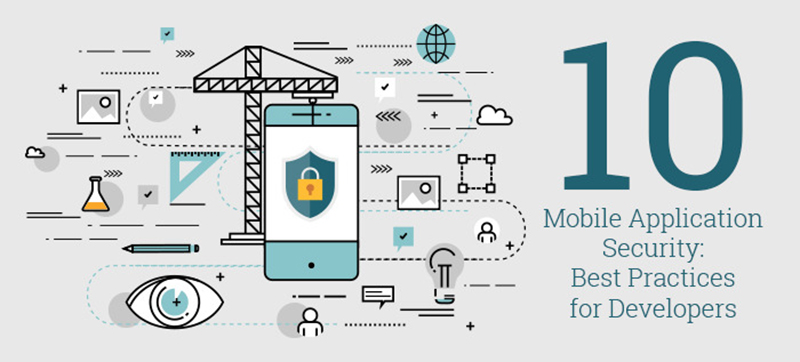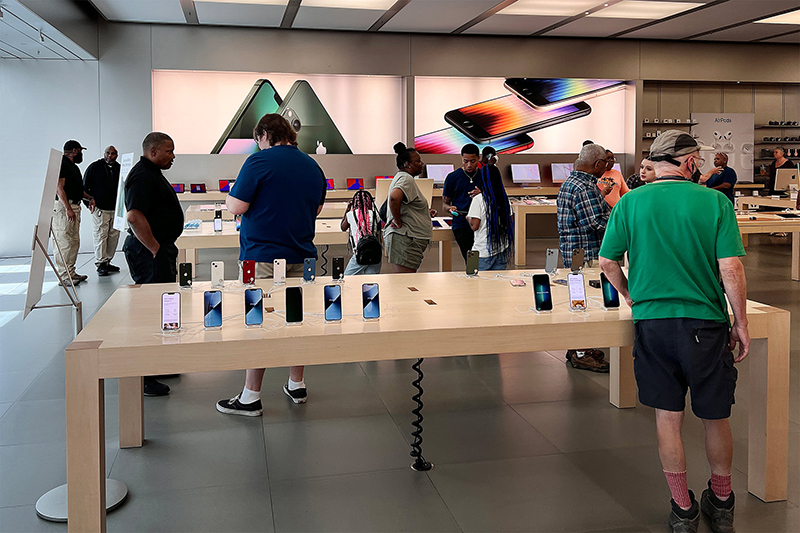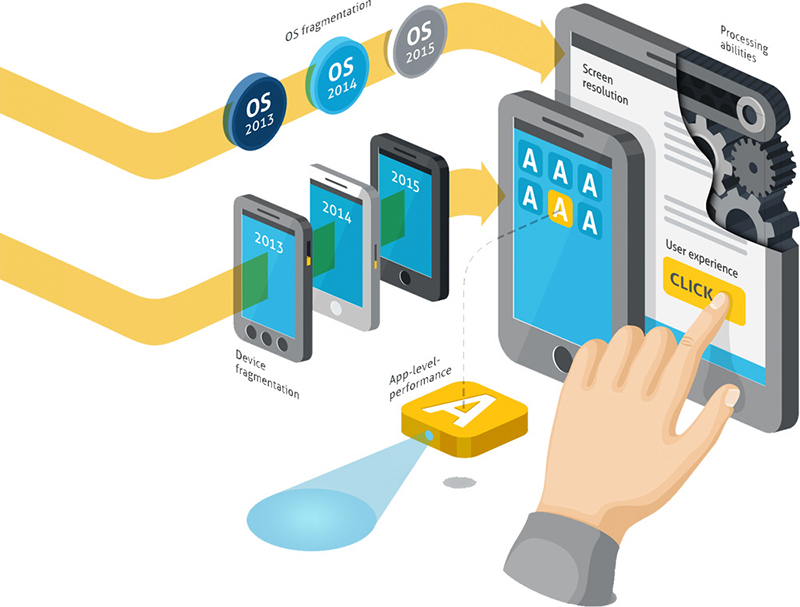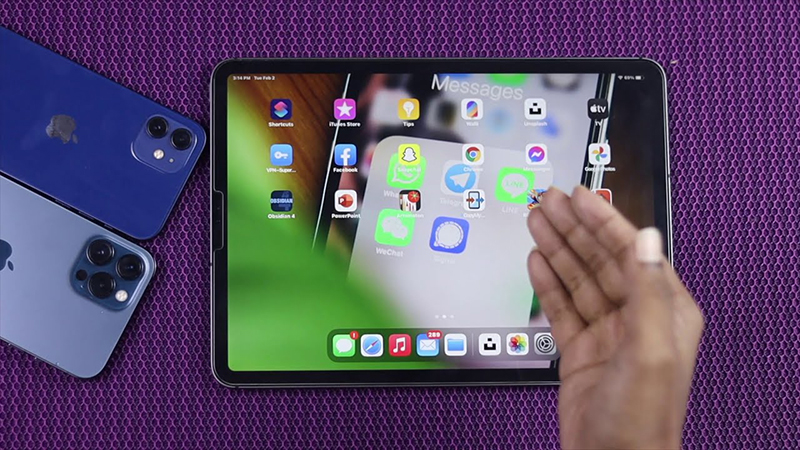Ensuring Strong Mobile App Security: Best Practices and Tips 2023
Mobile app security is the practice of protecting mobile applications from unauthorized access, theft, and damage to ensure user data's confidentiality, integrity, and availability. As mobile applications have become increasingly prevalent in our daily lives, the security of these applications has become a top priority. Mobile app security involves a range of practices, including secure coding, regular security assessments, ongoing security maintenance, and user education.
Related posts
The Top Mobile Ad Networks to Boost Your Advertising Strategy in 2023
Mastering the Art of App Design: A Comprehensive Guide for Designers 2023
1. Conducting Regular Security Audits
Regular security audits of mobile app security are crucial for protecting user data and privacy. These audits involve reviewing and analyzing the security protocols and procedures for the mobile app and identifying potential vulnerabilities and weaknesses. Here are some more details on how to conduct regular security audits of mobile app security:
- Regularly review and update security protocols: Keeping track of the latest security threats and vulnerabilities is essential to ensure that mobile app security protocols are up-to-date. After identifying security threats, app developers should update their security protocols and policies accordingly. Regularly conducting security scans and penetration testing is also essential to updating security protocols.
 Ensuring Strong Mobile App Security. Source: Proreviewsapp.com
Ensuring Strong Mobile App Security. Source: Proreviewsapp.com
-
Identify potential vulnerabilities and weaknesses:
- A thorough assessment of the mobile app's security infrastructure should be conducted to identify potential vulnerabilities and weaknesses in mobile app security. This includes both automated tools and manual testing. The testing should identify the potential attack vectors that could be used to compromise the security of the mobile app. For example, testing should look at areas such as authentication protocols, data encryption, and network communication. Analyzing the potential impact of identified vulnerabilities is crucial to prioritizing mitigation efforts.
- Implement measures to mitigate risk: After identifying potential vulnerabilities and weaknesses in mobile app security, developers should develop and implement mitigation strategies to address the risks. For example, an app with a weak authentication protocol could be a high-risk vulnerability that requires immediate action. Mitigation strategies can include encryption, strengthening authentication protocols, or implementing access controls. It is essential to monitor and review the effectiveness of these measures to ensure ongoing security. App developers can buy app rating services to improve app ranking.
Regularly conducting security audits is essential to maintaining strong mobile app security. These audits help identify potential vulnerabilities and weaknesses, allowing developers to develop and implement mitigation strategies to protect user data and privacy. The effectiveness of these strategies should be regularly reviewed and updated to ensure the ongoing security of the mobile app.
2. Ensuring Secure Data Storage and Transmission of Mobile app security
Ensuring secure data storage and transmission is critical to protecting user data and privacy in mobile apps. Data can be compromised through various attacks, such as man-in-the-middle attacks or data breaches, making it essential for developers to use secure data storage and transmission protocols. Here are some details on how to ensure secure data storage and transmission in mobile app security:
Mobile App Security Testing, Source: Youtube
- Use encryption for data storage and transmission: Encryption is widely used for securing data in mobile apps. Data encryption converts the data into an unreadable format, making it difficult for attackers to access. Encryption should be used for both data storage and transmission. For example, sensitive data, such as passwords or payment information, should be encrypted when stored on the device or transmitted over the network.
-
Avoid storing sensitive data on the device:
- Sensitive data should not be stored unless necessary. For example, if an app requires payment information, it should only store it temporarily and securely transmit it to a payment processor. If sensitive data must be stored on the device, it should be encrypted and stored securely, such as the device's keychain.
- Implement secure authentication and authorization mechanisms: Strong authentication and authorization mechanisms are crucial for secure data storage and transmission. For example, user authentication should use strong passwords, two-factor or biometric authentication. authorized to access.
- Regularly review and update security protocols: Regularly reviewing and updating security protocols is essential to maintaining secure data storage and transmission. This includes staying up-to-date with the latest security threats and vulnerabilities and implementing appropriate measures to mitigate the risks, such as regularly patching known security vulnerabilities and updating encryption protocols as needed.
Ensuring secure data storage and transmission is critical to mobile app security. Developers must use encryption for data storage and transmission, avoid storing sensitive data on the device and implement strong authentication and authorization mechanisms. Regularly reviewing and updating security protocols is crucial to maintaining secure data storage and transmission. You can buy iOS app downloads to improve app users for your apps.
3. Implementing Secure Coding Practices for Mobile app security
Implementing secure coding practices is crucial for developing secure mobile apps. Secure coding practices help reduce the risk of security vulnerabilities that attackers can exploit. Here are some details on how to implement secure coding practices in mobile app security:
- Use secure coding standards and guidelines: Developers should use secure coding standards and guidelines, such as OWASP Mobile Top Ten, to ensure that their code is secure and free from vulnerabilities. These guidelines provide developers with best practices for implementing security measures, such as input validation, error handling, and authentication.
- Implement input validation: Input validation is validating user input to ensure it meets the required format and is free from malicious code. Developers should validate all user input, including forms, API requests, and other sources. This helps prevent attacks like SQL injection or cross-site scripting (XSS).
- Use secure authentication and authorization mechanisms: Robust authentication mechanisms, such as two-factor authentication.
-
Implement secure data storage and transmission:
- Developers should implement secure data storage and transmission protocols to protect user data. Sensitive data, such as passwords and payment information, should be encrypted when stored on the device or transmitted over the network. Additionally, developers should avoid storing sensitive data on the device unless necessary.
- Regularly review and update code: Regularly reviewing and updating code is essential to ensuring that security vulnerabilities are identified and addressed. Developers should conduct regular code reviews and use automated tools to identify potential security vulnerabilities. Once identified, these vulnerabilities should be addressed promptly through code updates and patches.
Learn Application Security in 5 Minutes, Source: Youtube
Implementing secure coding practices is a critical component of mobile app security. Developers should use secure coding standards and guidelines, implement input validation, use secure authentication and authorization mechanisms, implement secure data storage and transmission, and regularly review and update code. By implementing these practices, developers can reduce the risk of security vulnerabilities and protect user data and privacy. App developers should buy App review services to improve app ranking faster.
4. Performing Rigorous Testing of Mobile app security
Performing rigorous testing is essential to ensuring the security of mobile apps. Rigorous testing helps identify security vulnerabilities that attackers could exploit, allowing developers to address them before the app is released. Here are some details on how to perform rigorous testing of mobile app security:
- Conduct a threat model analysis: Threat modeling is a process that helps identify potential threats and vulnerabilities in an app's design and implementation. Developers should conduct a threat model analysis to identify potential threats and vulnerabilities in the app's architecture and design. This analysis can help guide the testing process by identifying potential areas of weakness that should be tested thoroughly.
- Conduct security testing: Security testing involves testing an app's security features and identifying potential vulnerabilities. Security testing should be conducted throughout the development process, including testing for common vulnerabilities such as injection attacks, cross-site scripting (XSS), and cross-site request forgery (CSRF).
-
Use automated testing tools:
- Automated testing tools can help identify potential security vulnerabilities in an app quickly and efficiently. These tools can identify common vulnerabilities such as SQL injection, XSS, CSRF, and other types of vulnerabilities. Automated testing tools should be used with manual testing to ensure comprehensive testing of the app's security features.
- Conduct penetration testing: Penetration testing involves exploiting the app's vulnerabilities to identify potential security issues. A professional penetration testing firm or a qualified in-house team should conduct penetration testing. The penetration testing results can help identify potential vulnerabilities and guide the testing process.
- Conduct code review: Code review involves reviewing the app's code to identify potential security vulnerabilities. A code review should be conducted by an experienced security professional familiar with the app's programming language and best practices. Code review should be conducted throughout development to identify potential security issues early on.
Performing rigorous testing is critical to ensuring the security of mobile apps. Developers should conduct a threat model analysis, and security testing, use automated testing tools, conduct penetration testing, and conduct code review. By implementing these testing practices, developers can identify and address potential security vulnerabilities before the app is released.
5. Educating Users on Security Best Practices of Mobile app
Educating users on security best practices is essential to mobile app security. Many security vulnerabilities are caused by user actions, such as using weak passwords or downloading apps from untrusted sources. Educating users on security best practices can reduce the risk of security vulnerabilities and protect user data and privacy. Here are some details on how to educate users on security best practices for mobile app security:
- Provide clear and concise security guidelines: Developers should provide clear and concise security guidelines for users to follow. These guidelines should cover topics such as password best practices, app permissions, and how to identify phishing scams. Guidelines should be easily accessible within the app and written in plain language that is easy for users to understand.
- Use in-app messaging to educate users: In-app messaging is a powerful tool for educating users on security best practices. Developers can use in-app messaging to provide users with tips on how to stay secure while using the app. For example, an app could provide users with a reminder to update their password regularly or a warning when they are about to download an app from an untrusted source.
-
Provide tutorials and training materials:
- Developers can provide users with tutorials and training materials that teach them how to use the app securely. These materials can include videos, interactive tutorials, or step-by-step guides. Providing users with training materials can help ensure that they are using the app securely
- Encourage users to report suspicious activity: Encouraging users to report suspicious activity can help identify potential security vulnerabilities early on. Developers should provide users with a way to report suspicious activity within the app and clarify that user reports are taken seriously. By encouraging users to report suspicious activity, developers can identify potential security vulnerabilities and address them promptly.
- Stay up-to-date on security threats and inform users: Developers should stay up-to-date on the latest security threats and vulnerabilities and inform users of any potential risks. This can include informing users about new phishing scams or informing them of a security vulnerability in a third-party app that the app integrates with. By keeping users informed, developers can help reduce the risk of security vulnerabilities caused by user error.
How to make your Mobile App Secure? Source: Youtube
Educating users on security best practices is critical to mobile app security. Developers should provide clear and concise security guidelines, use in-app messaging to educate users, provide tutorials and training materials, encourage users to report suspicious activity, stay up-to-date on security threats, and inform users. By implementing these practices, developers can help reduce the risk of security vulnerabilities caused by user error and protect user data and privacy.
6. Ensuring Ongoing Security Maintenance of Mobile app security
Ensuring ongoing security maintenance is essential to ensuring the security of mobile apps. Mobile apps are constantly evolving, and security vulnerabilities can emerge over time. Ongoing security maintenance helps identify and address potential vulnerabilities, keeping user data and privacy secure. Here are some details on how to ensure ongoing security maintenance of the mobile app security:
- Conduct regular security assessments: Developers should conduct regular security assessments to identify potential vulnerabilities. Regular assessments can help identify new security threats and ensure the app is secure against the latest vulnerabilities. Security assessments should be conducted by a qualified security professional familiar with the app's architecture and design.
- Stay up-to-date on security best practices: Developers should stay up-to-date on the latest and incorporate them into the app's design and development. This can include using secure coding practices, implementing robust authentication mechanisms, and using encryption to protect user data. Staying up-to-date on security best practices can help ensure the app is secure against the latest security threats.
-
Monitor for security incidents:
- Developers should monitor the app for security incidents and respond promptly if an incident occurs. This can include monitoring for unusual activity, such as a large number of failed login attempts, or monitoring for unusual network activity. If a security incident occurs, developers should respond quickly to identify the source of the incident and address any potential security vulnerabilities.
- Regularly update the app: Developers should regularly update the app to address potential security vulnerabilities and incorporate new security features. Updates should be pushed out to users as soon as possible to ensure that they are using the app's latest, most secure version. Developers should also encourage users to update their apps regularly to ensure they use the latest, most secure version.
- Implement a bug bounty program: Bug bounty programs incentivize security researchers to identify and report security vulnerabilities in the app. By implementing a bug bounty program, developers can identify potential security vulnerabilities early on and address them promptly. Bug bounty programs can also help improve the overall security of the app by encouraging researchers to identify potential vulnerabilities.
Mobile App Security - An Overview For Securing Your Mobile Project. Source: Youtube
Ensuring ongoing security maintenance is critical to ensuring the security of mobile apps. Developers should conduct regular security assessments, stay up-to-date on security best practices, monitor for security incidents, regularly update the app, and implement a bug bounty program. By implementing these practices, developers can identify and address potential security vulnerabilities promptly, keeping user data and privacy secure.
Conclusion
Mobile app security is a critical aspect of developing and using mobile applications. With the widespread use of mobile devices and applications, cybercriminals have increasingly targeted these platforms to gain unauthorized access to user data and steal sensitive information. Mobile app security involves a range of practices, including secure coding, regular security assessments, ongoing security maintenance, and user education.
By taking appropriate security measures, mobile app developers can protect user data and privacy, minimize the risk of security breaches, and provide users with a secure and seamless experience. Developers must stay
up-to-date with the latest security threats and best practices as security threats constantly evolve. Users also play an essential role in mobile app security by using strong passwords, updating their apps regularly, and being cautious of suspicious links or messages.
Mobile app security is more important than ever in today's digital age. By taking a proactive approach to mobile app security, developers and users can ensure user data's confidentiality, integrity, and availability and protect against cyber threats.
Related posts
Best Tips to increase iOS app installs on the App Store organic
How to Buy Top App keyword position for your Android, iOS apps, and games
Thanks for reading.
Source: Buy app reviews
Ensuring Strong Mobile App Security: Best Practices and Tips 2023
- 1. Conducting Regular Security Audits
- 2. Ensuring Secure Data Storage and Transmission of Mobile app security
- 3. Implementing Secure Coding Practices for Mobile app security
- 4. Performing Rigorous Testing of Mobile app security
- 5. Educating Users on Security Best Practices of Mobile app
- 6. Ensuring Ongoing Security Maintenance of Mobile app security
- Conclusion








Leave a Reply
Your e-mail address will not be published. Required fields are marked *